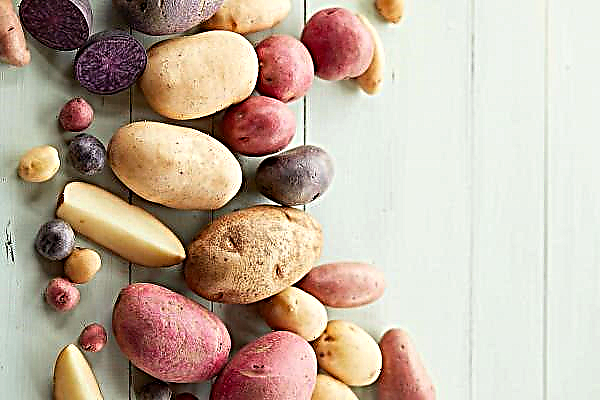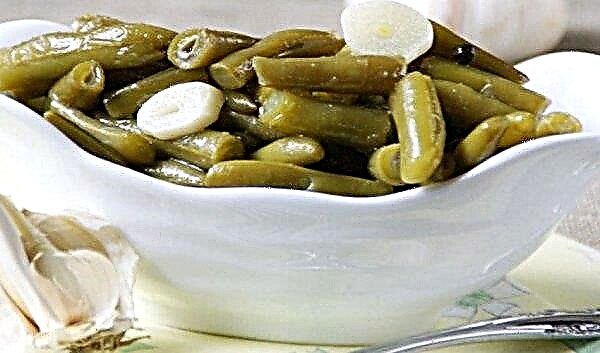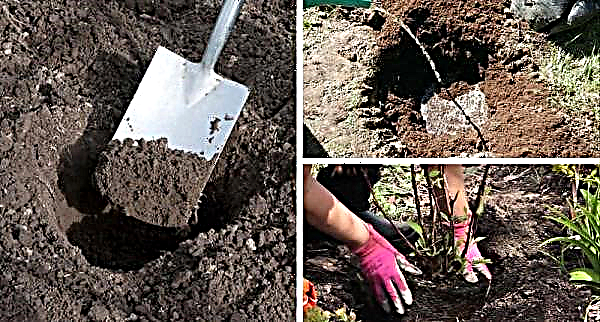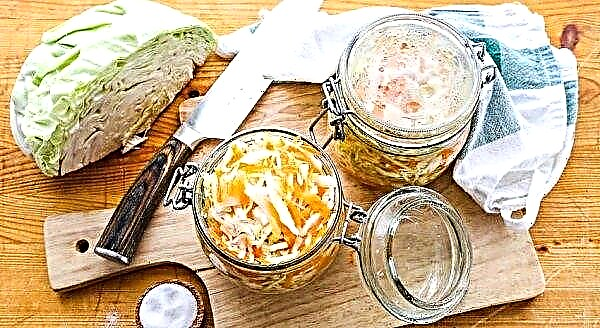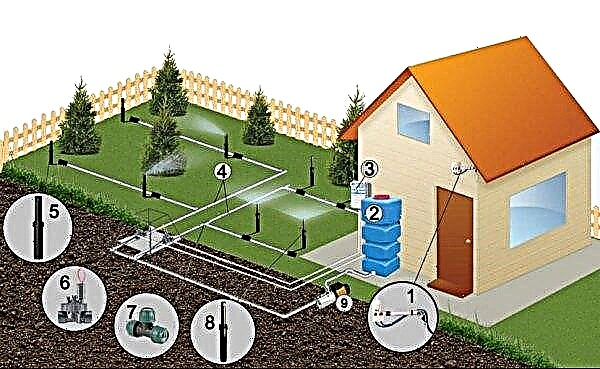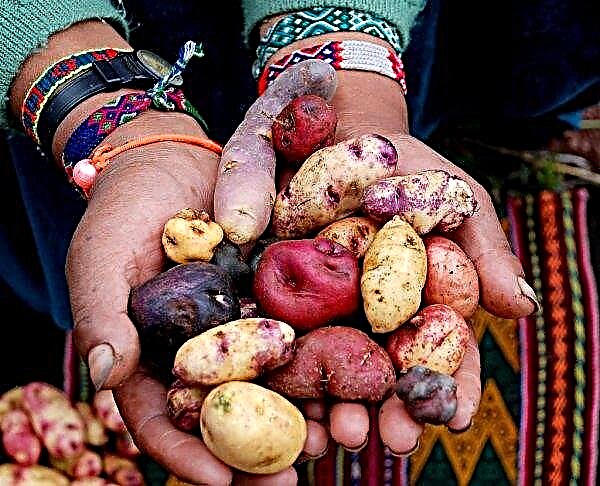Carrots are a useful vegetable crop grown everywhere, and every gardener tries to take at least one row in his plot under it. When choosing planting material, the buyer first of all pays attention to the ripening dates of the variety, as well as to the taste qualities of the root crop. Early varieties are especially valued, among which Napoli F1 stands out.
History of Variety Breeding
The breeding was carried out by Dutch breeders. Work on improving the culture was carried out by the breeding company Bejo Zaden. The resulting hybrid can be grown in the Northern, Volga-Vyatka, Central Black Earth regions.
Did you know? The global carrot production growth rate is greater than the world population growth rate.
Characteristics and description of the variety
The variety belongs to the Nantes type and has a number of specific features.
Productivity
Its productivity is 2.2–5.6 kg / m² with a sowing density of 1.5–3 million / ha. The root crop grows weighing 66-154 grams.

Ripening and harvesting dates
Hybrid is ultra early: Root crops take 90–100 days to mature. If planting is carried out at the end of April, then selective harvesting can be carried out in July. The main harvest in the stage of technical ripeness is carried out in August - September.
Grade stability
The hybrid has good immunity to common diseases of this culture. In addition, seedlings are able to tolerate frosts to -3 ° C.
Early carrot varieties also include:
Positive qualities and possible disadvantages
- Among the positive qualities of the variety that distinguish it from the rest, we can note the following:
- universality of the use of fruits;
- ultra early variety;
- high germination rates;
- germination resistance to frost;
- unpretentiousness;
- smoothness of root crops.
Among the shortcomings, only poor root healthwhich is inherent in all early cultures. Also, some consider the small size of the tops as a disadvantage, believing that the root crop will also be small. But this hybrid is not typical to have a small root crop with a small tops.

Growing Features
Napoli F1 carrots can be planted in late April - the first half of May. Weather conditions on the day of planting are not important for her, the main thing is that the threat of frost is passed and there is no prolonged drought.
Choosing a place and preparing the garden
Carrots are a lover of sunlight, so it must be planted in a well-lit area. She prefers light, moderately moist, slightly acidic and breathable soil. It is good to plant on light loam and sandstone. On clay, heavy, acidic soils practically does not grow.
Many gardeners recommend planting seeds in solid soil, and sprinkle loose. To do this, the grooves are compacted and covered with a mixture of land with peat.
Crop rotation rules
The best predecessors of the culture: potatoes, cabbage, tomatoes, cucumbers, onions, legumes. It is not recommended to plant after dill, celery, parsley, eggplant, parsnip. It is not advisable to plant carrots for several years in a row in one place.

Seed preparation and sowing
Carrot seeds are rich in essential oils that slow down the germination process, therefore for better germination, seeds are recommended to be soaked in water. 10-11 hours are enough; during this time, non-viable seeds are also eliminated. After soaking, the seeds must be put on a damp cloth and placed in a warm room with a temperature of + 20 ... + 24 ° C for several days. Then dry well and proceed with planting.
Important! Soaking and germination can reduce the emergence time from 30–40 days to 10.
Before planting, the soil is abundantly irrigated. Crops must be carried out with an interval of 20 cm between rows and 10–20 mm between individual seeds. They need to be deepened into the soil by 15–20 mm.
Due to the fact that the seed is very small, it is difficult to adhere to such planting conditions, so you can use improvised materials. Normal will do toilet paper, to pieces of which seeds should be laid out at the required interval. Seed is attached to paper using starch. In this form, the seed is placed in moist grooves, sprinkled with humus and irrigated.

Outdoor carrot care
Carrot care is completely uncomplicated and is no different from caring for other garden crops.
Feed and watering scheme
Napoli F1 can tolerate short periods of drought, but a sufficient amount of water is needed for a normal crop. Do not allow complete drying of the soilso that the lateral processes do not appear in the root crop. It is advisable to water the bed with young plants three times a week, spending 4 liters per square meter. In the middle of the growing season, the frequency of irrigation procedures should be reduced to once a week, and the amount of water consumed should be doubled.
Did you know? The town of Holtville in California is considered the world capital of carrots. Every year, a carrot festival is held there, an important part of which is a beauty contest to elect the “Carrot Queen”.
3-4 feedings per season. The first time fertilizers are applied three weeks after emergence, or after the first thinning of the beds. The remaining dressings are carried out at the same interval - so that after the introduction of nutrients there is a minimum of two weeks before harvesting. Use better liquid top dressing.

Loosening and weed control
Loosening is an extremely important procedure, since it allows you to save moisture in the soil and prevent the intensive growth of weeds, since they grow very quickly and take away all the nutrients. The first planting is carried out before the emergence of seedlings. All subsequent ones - 2-3 hours after irrigation or after rainfall.
Pest and Disease Control
The only dangerous pest of any kind of carrot is a carrot fly. For preventive purposes, thinning of the beds should be carried out in a timely manner and immediately destroy the tops, as well as alternating the beds with carrots and onions.

Features of harvesting and storage of crops
As mentioned earlier, cleaning is carried out in two stages. Regardless of when the crop is harvested, the root crop must be manually carefully removed from the ground. If the carrots are too large, it is better to first dig it with a shovel, and then pull it by the tops - otherwise the tops can break and it will be much more difficult to get the root crop out of the ground. If you pull a particularly long root crop, or try to pull the carrots out of dried soil, it can break into two parts.
Important! It is not recommended to shake the ground when striking one carrots on another, or on the ground. This can lead to injury to the root crop and the deterioration of its keeping quality.
After cleaning the root crops manually, the tops are cut off from them. Then the crop is laid out for drying for two hours. The crop is stored at 0 ... + 3 ° C and high humidity (90%). It is advisable to keep it in boxes filled with sand, or in plastic bags.
 Storage of carrots in sandboxes
Storage of carrots in sandboxes
Choosing a Napoli F1 variety, you can as soon as possible get a healthy vegetable on your table, spending a minimum of effort and time to care for it. Of course, due to the early ripeness, root crops are not stored for long, which does not allow making reserves for the winter. But there is an opportunity to enjoy the pleasant taste of the vegetable earlier than others.




